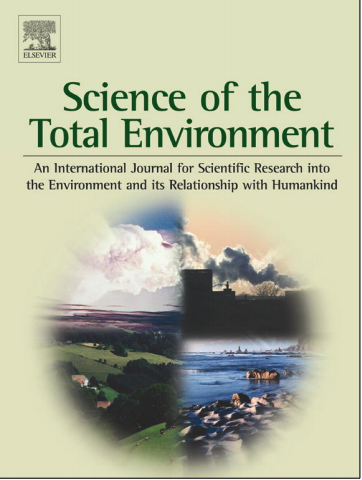Perchlorate is most widely known as a solid oxidant for missile and rocket propulsion systems although it is also present as a trace contaminant in some fertilizers. It has been detected in drinking water, fruits, and vegetables throughout New Jersey and most of the United States. At sufficiently high doses, perchlorate interferes with the uptake of iodine into the thyroid and may interfere with the development of the skeletal system and the central nervous system of infants. Therefore, it is important to quantify perchlorate in breast milk to understand potential perchlorate exposure in infants. In this study we measured perchlorate in breast milk, urine, and drinking water collected from 106 lactating mothers from Central New Jersey. Each subject was asked to provide three sets of samples over a 3-month period. The average±SD perchlorate level in drinking water, breast milk, and urine was 0.168±0.132ng/mL (n=253), 6.80±8.76ng/mL (n=276), and 3.19±3.64ng/mL (3.51±6.79μg/g creatinine) (n=273), respectively. Urinary perchlorate levels were lower than reference range values for women of reproductive age (5.16±11.33μg/g creatinine, p=0.03), likely because of perchlorate secretion in breast milk. Drinking water perchlorate levels were ≤1.05ng/mL and were not positively correlated with either breast milk or urine perchlorate levels. These findings together suggest that drinking water was not the most important perchlorate exposure source for these women. Creatinine-adjusted urine perchlorate levels were strongly correlated with breast milk perchlorate levels (r=0.626, p=<0.0005). Breast milk perchlorate levels in this study are consistent with widespread perchlorate exposure in lactating women and thus infants. This suggests that breast milk may be a source of exposure to perchlorate in infants.
Perchlorate exposure and lactating women in an urban community in New Jersey
Citation:
M. Borjan, S. Marcella, B. Blount, M. Greenberg, J. Zhang, E. Murphy, L. Valentin-Blasini, and M. Robson. 2011. Perchlorate exposure and lactating women in an urban community in New Jersey.Science of the Total Environment, 409(3):460-464. https://doi.org/10.1016/j.scitotenv.2010.10.045
